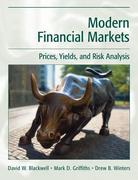

The local favorite Seven Star Bakery is famous for its artisan bread and pastries as well as freshly brewed coffee. Even during recent times their business is booming. Since the commercial real estate rental price is at its new low, the company is considering opening a new location in Bristol. They hired you to carry out the financial analysis. It is estimated that the initial investment is 2 million dollars for setting up the new branch, deprecated over 10 years using a straight-line depreciation. The new branch is expected to last at least 10 years. The sales are expected to be 1 million dollars for the first year, growing at 15% each year for the next 9 years. There is also a 400,000 fixed cost per year starting year 1 accounting for rent, advertising, and utilities. The cost of goods sold (COGS) is 45% of the sales per year. Current Assets is expected to be 10% of next year's sales while current liability is expected to be 6% of next year's sales. The before-tax salvage value in year 10 is expected to be 30% of the initial investment. The corporate tax rate is 20% and the firm's WACC is 9% ja) (12 pts) Estimate the FCFs and calculate the NPV and IRR for the project. Should they open the new branch? Hint: Net working capital (NWC) = Current Assets - Current Liability; Change in NWC = This year's NWC - Last year's NWC b) (8 pts) Find the break-even values for first year sales, COGS rate, WACC and growth rate. Which one is the most significant value driver? c) (6 pts) If the true discount rate of the project is higher than the firm's WACC, more specifically it is WACC + 3%, should they still take on the project? $ $ Corporate tax rate Ininitial Investment WACC First Year Sales Current Assets Current Liability Annual Fixed Cost COGS Before Tax Salvage Value Sale growth rate Depreciation Project length Given 20% 2,000,000 9.00% 1,200,000 10% of next year's Sales 6% of next year's Sales 400,000 45.00% of this year's Sales 30% of initial investment 5.00% 200,000 10 years $ $ FCE calculation Year 0 Year 1 Year 2 Year 3 Year 4 Year 5 Year 6 Year 7 Year 8 Year 9 Year 10 Sales COGS Fixed Cost Depreciation EBIT Tax NOPAT Depreciation Change in NWC Capex After Tax Salvage Free Cash Flow NWC calculation Current Assets Current Liability NWC requirement Change in NWC NPV IRR b) Break-even Analysis Percentage Change Origial Value Breakeven Value First Year Sales COGS WACC Sales Growth Rate The most significant value driver is: c) True discount rate NPV IRR The local favorite Seven Star Bakery is famous for its artisan bread and pastries as well as freshly brewed coffee. Even during recent times their business is booming. Since the commercial real estate rental price is at its new low, the company is considering opening a new location in Bristol. They hired you to carry out the financial analysis. It is estimated that the initial investment is 2 million dollars for setting up the new branch, deprecated over 10 years using a straight-line depreciation. The new branch is expected to last at least 10 years. The sales are expected to be 1 million dollars for the first year, growing at 15% each year for the next 9 years. There is also a 400,000 fixed cost per year starting year 1 accounting for rent, advertising, and utilities. The cost of goods sold (COGS) is 45% of the sales per year. Current Assets is expected to be 10% of next year's sales while current liability is expected to be 6% of next year's sales. The before-tax salvage value in year 10 is expected to be 30% of the initial investment. The corporate tax rate is 20% and the firm's WACC is 9% ja) (12 pts) Estimate the FCFs and calculate the NPV and IRR for the project. Should they open the new branch? Hint: Net working capital (NWC) = Current Assets - Current Liability; Change in NWC = This year's NWC - Last year's NWC b) (8 pts) Find the break-even values for first year sales, COGS rate, WACC and growth rate. Which one is the most significant value driver? c) (6 pts) If the true discount rate of the project is higher than the firm's WACC, more specifically it is WACC + 3%, should they still take on the project? $ $ Corporate tax rate Ininitial Investment WACC First Year Sales Current Assets Current Liability Annual Fixed Cost COGS Before Tax Salvage Value Sale growth rate Depreciation Project length Given 20% 2,000,000 9.00% 1,200,000 10% of next year's Sales 6% of next year's Sales 400,000 45.00% of this year's Sales 30% of initial investment 5.00% 200,000 10 years $ $ FCE calculation Year 0 Year 1 Year 2 Year 3 Year 4 Year 5 Year 6 Year 7 Year 8 Year 9 Year 10 Sales COGS Fixed Cost Depreciation EBIT Tax NOPAT Depreciation Change in NWC Capex After Tax Salvage Free Cash Flow NWC calculation Current Assets Current Liability NWC requirement Change in NWC NPV IRR b) Break-even Analysis Percentage Change Origial Value Breakeven Value First Year Sales COGS WACC Sales Growth Rate The most significant value driver is: c) True discount rate NPV IRR








